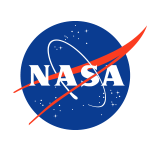Software Bus Network Message Routing Protocol (SBN)
Project Description

The Software Bus Network (SBN) is a software application that enables seamless flight software communication between multiple processors or spacecraft. The SBN is an application that depends on the Core Flight Software (CFS) developed by Goddard Space Flight Center (GSFC). A version of the SBN application currently exists, but is limited by the fact that processors or spacecraft must be directly connected in order to make use of the SBN. This effort proposes to remove that limitation by implementing a router capability that will be able to send messages between processors or spacecraft that are not directly connected by relaying them through intermediate nodes.
The Core Flight Software (CFS) is a framework of reusable flight software services and applications. A key component of the CFS is a message bus that allows different software applications to send messages to one another using a publish/subscribe method. The message bus connects applications that are running on the same processor. As flight software becomes more complex, it becomes necessary to use multiple processors or even multiple spacecraft. The Software Bus Network (SBN) application makes it easier to use CFS software on multiple processors or spacecraft by providing a way for applications to communicate over a variety of interfaces. The SBN acts as a kind of bridge between the message buses on different processors. This allows communication to take place in a way that is transparent to all of the other software applications being used.
More »
Anticipated Benefits
NASA has several large funded missions that use the Core Flight Software (CFS). This application can be used on any such mission that uses the CFS on multiple processors or spacecraft.
NASA has several unfunded or planned Distributed Spacecraft Missions. The Core Flight Software (CFS) Software Bus Network (SBN) application can be used to provide software communication between the various spacecraft used in a DSM.
More »Project Library
Primary U.S. Work Locations and Key Partners
| Organizations Performing Work | Role | Type | Location |
|---|---|---|---|
 Goddard Space Flight Center
(GSFC)
Goddard Space Flight Center
(GSFC)
|
Lead Organization | NASA Center | Greenbelt, Maryland |
Primary U.S. Work Locations
-
Maryland


